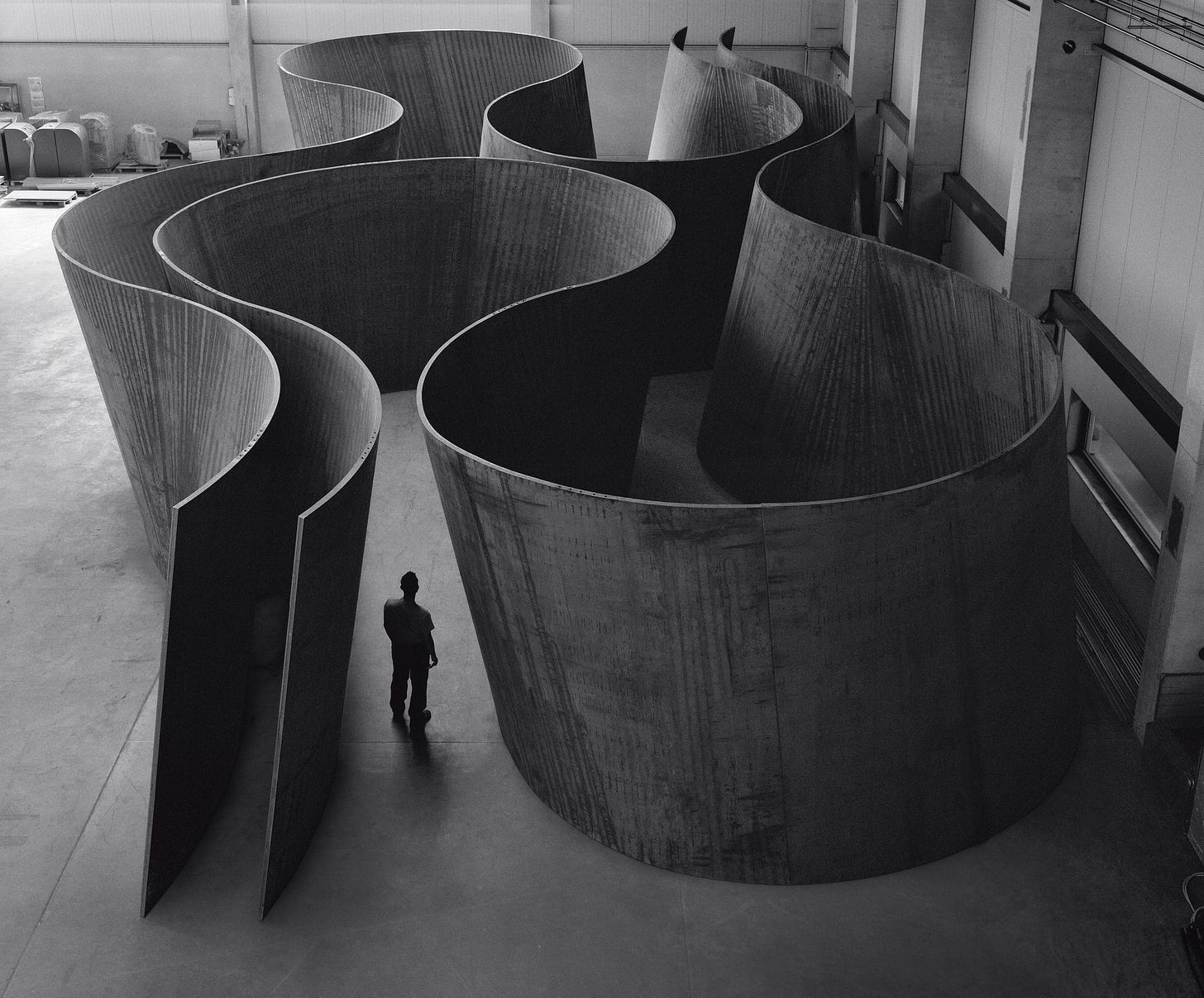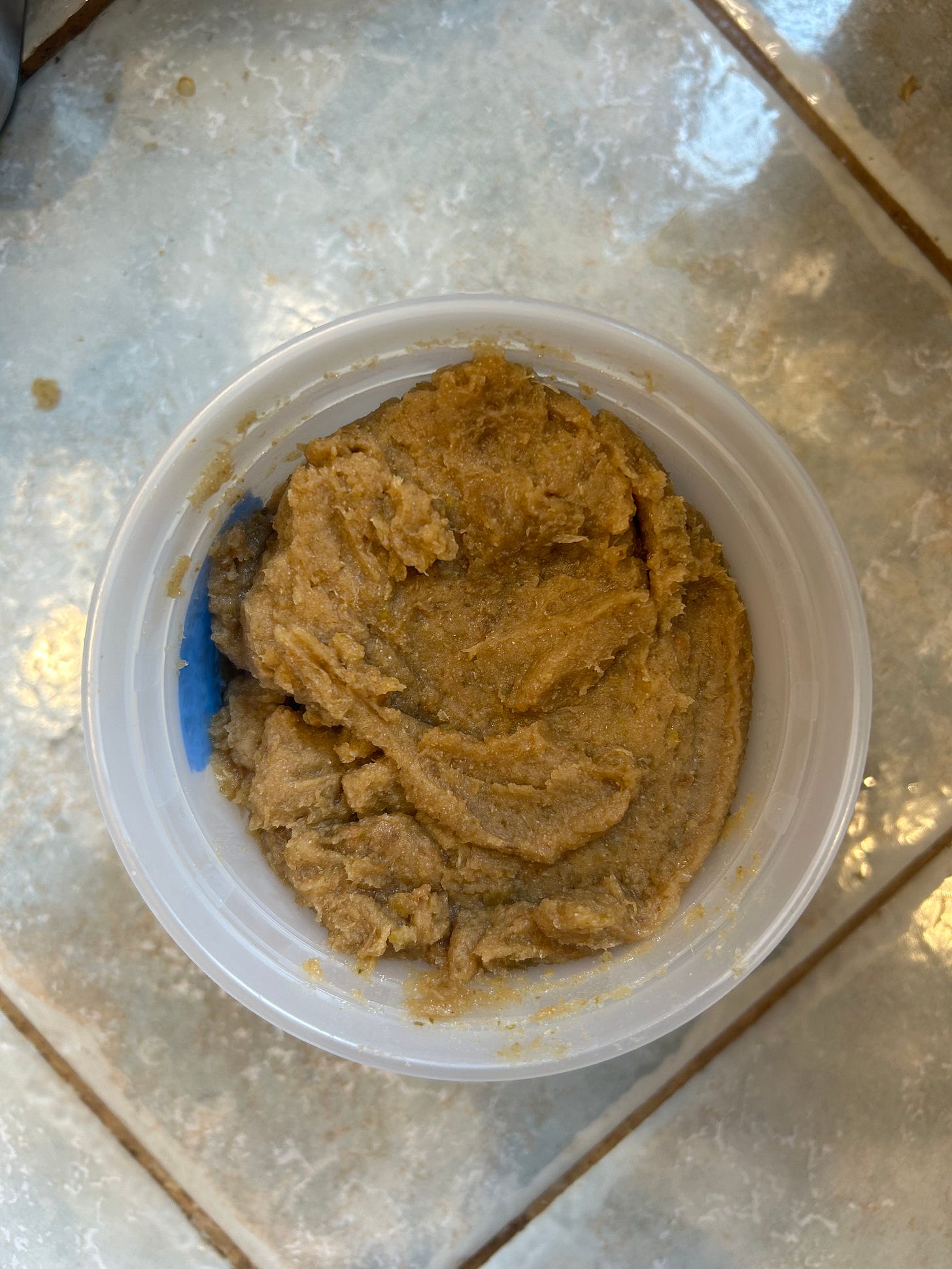a big jar of lime peels
a little way of upcycling byproducts in your own kitchen
Waste is just a failure of imagination
With the most recent post centering on company-sized versions of upcycling, I wanted to provide a micro example of upcycling. What better way than to show you something from my own kitchen?
Fiona and I moved in together in April 2023, with plenty of alley-parked UHauls being threatened with towing. Getting our new space ready to share with our friends was important to us and we decided that in June, we would have a housewarming party.
Ever the planner, Fiona wanted to make a large batch of gimlets to get people feeling chatty and make it from scratch. I went to juicing about ten pounds of limes and thought that just throwing out that many squeezed limes would be wasteful, so I grabbed an empty brewing carboy and layered limes and salt to the brim. I ran out of salt, but it was worth it in my mind because we at least weren’t throwing away that many limes all at the same time.
We had a great party, and this behemoth of a jar filled with salt and limes was, unfortunately, quite the topic of conversation. It didn’t help that it was the lone item on the top of our fridge with absolutely no context, yet there it sat.
…for a year and a half.
I would have moments of really wanting to clean the house and seeing the jar, I’d think that’ll take all day, just by itself, opting to clean the rest of the apartment. Contents of the jar changed, darkened, and liquified over time. And finally, the day came this past weekend where I announced to an empty kitchen “it’s time.”
top layer
Cracking into the top was exhilarating. I could smell the limes and I felt relief from deciding to do something with this jar finally. Leathery limes left crater-like imprints in the Kosher salt that kept crispy white windows into deeper layers of citrus. The salt was solid from pulling out water from the fruit, and drying back out again into a network of Richard Serra sculptures in the winter time.
I spread the limes and salt from this layer onto separate sheet pans so that I could dry them out. The salt and citric acid pulled from the limes was basically already dry, and I wanted to make sure there was no residual water left over. The limes, on the other hand, were baked for a few hours to turn them into black limes. Normally, black limes are simply dried in the sun, but having preserved these in salt for the last eighteen months, I was curious to see how this would compare. There isn’t much sun in Chicago in February, so baking them at 200F for the whole day seemed about as close as I could muster.
I blitzed them in the blender and sifted them out into more of a grey lime. It’s possible the amount of salt kept them lighter in color, because these were dried to the point that they were easily crushed.
transition layer
A small sliver of the jar had limes that weren’t quite dry and salt that was much more liquidy than the top layer. I left the salt behind with the bottom layer and put these juicier limes into a mason jar with vodka for a rainy day. One project rolls into the next project because I have no plans for preserved lime vodka, but see great margarita potential for the summer.
The fact that these limes were still wet after so long gave me some fluttering in my heart. This liquid didn’t feel quite like water or lime juice, and had a viscous aspect to it. After filling up the mason jar with vodka and popping a glass weight on top, I got excited for the remaining depths of the jar.
bottom layer
The limes at this stage were drenched. I put them into a freezer bag, set my Anova immersion heater to 185F, and used my new Chef’s press to keep the bag under the water for a few hours while the limes broke down. Once they had cooked down, I blended up the whole batch and was left with a preserved lime paste that had the consistency and saltiness of miso. That night, I combined the lime paste, miso, olive oil, some spices and Chinese black vinegar to make a marinade for some salmon. I’ll admit that the lime paste is quite salty, so a little goes a long way, but I’m excited to see what else I’m able to do with this.
I was left with something that looked like crystallized honey at the bottom of this jar.
When the jar was sitting on top of my fridge for this long, I was anticipating that most of this bottom layer was stubborn lime juice that wasn’t evaporating. I was hoping that the salt would draw out more essential oils from the peels, akin to an oleo-saccharum, but more of an oleo-salado in this case.
Boy was I in for a surprise, because an oleo-salado is what I got. I dried this down in our toaster oven for about four hours, breaking it up every so often so that other sections of salt could dry off the remaining water. I was left with the most pleasant smelling essential oil salt. It has a consistency of brown sugar and the aroma of ten pounds of limes being squeezed. Fiona noted that it smelled somewhat like sweetened lime juice you’ll see bartenders use but more intense. I’m excited to use this for cimarronas, which I crushed every day in Guatemala for my 30th birthday.
After everything was washed and packed up, I felt a mix of melancholy and excitement. Melancholic because this project was done, and linked to a meaningful day in my life where Fiona and I celebrated moving to the next stage of our lives together. For over a year, it had been both a running joke and a quiet reminder of that time.
At the same time, I’m excited to share these five new projects in new meals and with friends and family. Five new ways to enjoy savory, sweet, and seltzers. Limes that had their essence spanning from Fi and I first making our home together, to when we finally tie the knot. It’s fun to know we have different parts of our lives stowed away in our pantry.








